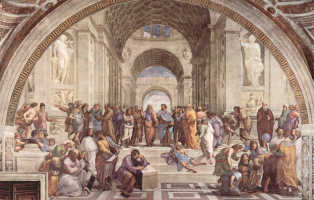Top 10 Common Myths about History
It's common to accept history for fact. In truth, it is - at best - the most trustworthy account of what occurred after researching several viewpoints from the ... read more...era. Historical narratives of events are frequently not objective and are frequently skewed in favor of the person who wrote them. A professional historian's job involves a significant amount of verifying these numerous, frequently contradictory narratives, despite the fact that they also have their own biases and interests. As a result, a lot of us continue to hold onto a lot of historical "facts" that are actually distorted versions of the actual events, reinforced by out-of-date or erroneous history texts, pop culture, and our own prejudices.
-
While there are many historical misconceptions and myths associated with Christopher Columbus's life, including the myth that he was the first European to set foot on American soil, one persistent one is connected to a larger historical misconception that no one knew the Earth was round until relatively recently. Numerous tales of Columbus's journey continue to assert that his round of the globe proved the Earth was round for the first time, shattering the prevalent belief at the time that it wasn't.
That's in spite of the fact that, according to one historian, practically everyone has known the Earth is round from at least the third century BC, at least in the Western world. That discovery had been made as early as 600 BC by philosophers, mathematicians, and other experts, and it would have been well-known long before Columbus's expedition.

http://theproclaimedword.blogspot.com/ 
https://www.brandwatch.com/ -
People had a life expectancy of no more than 30 during the majority of our history, according to a frequently cited statistic. Due to another widely-held historical misconception that it was a period of nearly constant fighting and widespread misery for the populace, it seems obvious. It's amazing that the ordinary human could even reach 30 in that kind of environment.
Even though we'll probably never know the exact life expectancy at any period in our history, there isn't any reason to think that it was considerably lower than it is now, with the exception of children. The legend of the witches being burned at the Salem trials probably originated from its comparison to the European witch trials, where being burned at the stake was still a common punishment for suspected witchcraft up to the 18th century.

https://fineartamerica.com 
https://heranet.info -
Between May and October 1692, a series of inquiries and prosecutions known as the Salem Witch Trials took place in Salem, Massachusetts, a predominantly Puritan community. It was widely believed by everyone in the community that witches were to blame for a sudden outbreak of convulsions and violent contortions in a number of young girls. It is regarded as a significant occurrence of the witch-burning era in contemporary times, which was popular in Europe at the same time.
But in Salem, no witches were ever set on fire. The majority of the accused witches during the trials were hanged as required by English law at the time, unlike their counterparts across the Atlantic. The legend of the witches being burned at the Salem trials probably originated from its comparison to the European witch trials, where being burned at the stake was still a common punishment for suspected witchcraft up to the 18th century.
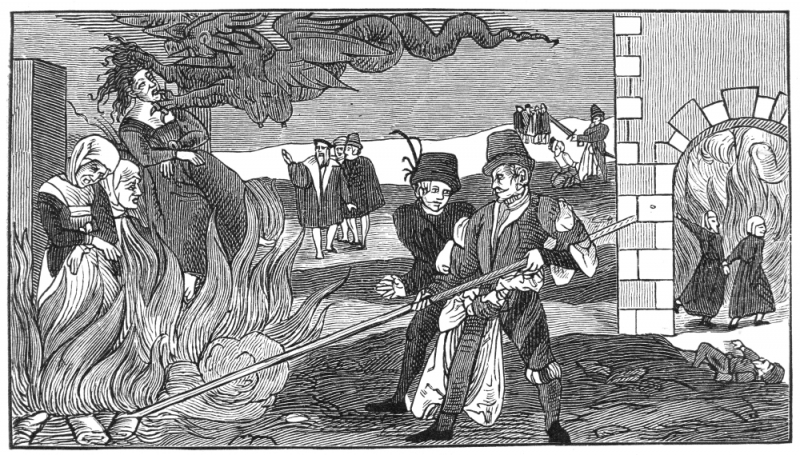
https://www.walmart.com/ 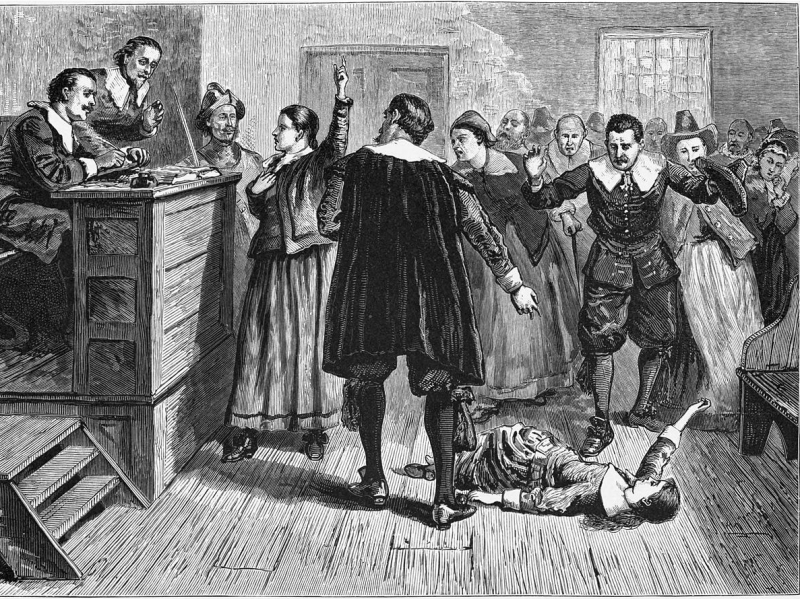
https://www.pinterest.com/ -
The Dark Ages, which roughly spanned from the 5th century and the time of the fall of the Roman Empire to the 10th century, are often seen as a time of widespread unrest, extreme poverty, and overall misery. It adheres to the more general notion that the fall of Rome marked the end of the enlightened and wise period known as classical antiquity.
So, just how "black" were the Dark Ages? This notion has been contested by several historians in recent years, who attribute it to historians of the Renaissance who were strongly pro-Rome. In truth, even if they weren't on the same level as the Roman empire, the time period was distinguished by numerous scientific, literary, and artistic accomplishments across Europe.
More importantly, this myth has a Eurocentric perspective on history and assumes that everyone else also had a difficult time. One of the Middle East's most affluent periods in history was during what the West today refers to as the Dark Ages. Massive advancements were made in the disciplines of science, mathematics, banking, medicine, and other fields during the Golden Age of Islam, which spanned around the 8th to the 14th centuries.
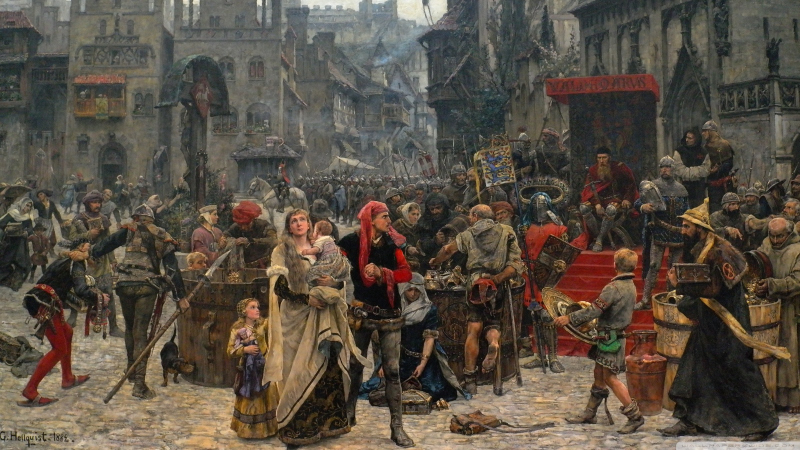
https://histastrophe.com/ 
http://jonasdero.deviantart.com -
Without a question, cleanliness standards have improved significantly over the course of human history. Modern medicine has shown us that keeping clean and routinely cleaning your environment can completely remove many infections. That, however, is frequently interpreted to suggest that no one ever tried to keep themselves clean throughout history, contributing to the greater misunderstanding that history has only been a constant march toward progress in every area.
Contrary to popular belief, those who lived in prosperous empires for the most of recorded human history kept a cleaner lifestyle. As an illustration, consider the Roman Empire, where public baths were widespread. Everybody, even the farmers, washed their hands and faces every morning in the majority of medieval towns throughout Europe and Asia, which at the time had the highest populations in the known world. Those who could afford it would frequently take baths. Even at the time, it was well known that keeping filthy may cause infections by attracting fleas and lice.
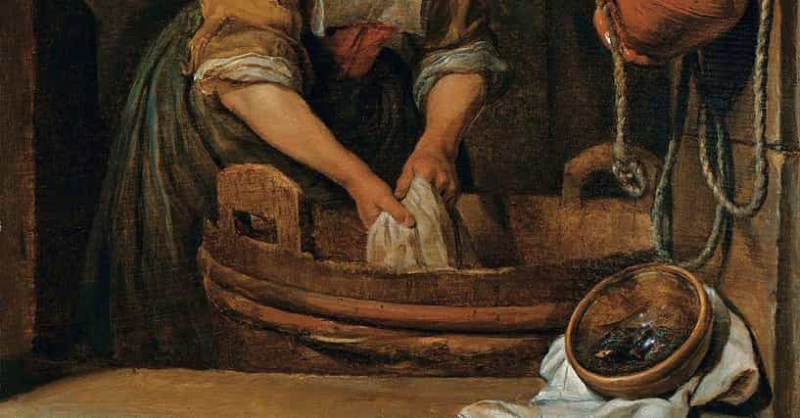
https://www.ranker.com/ 
https://www.rd.com/ -
Although it may not be as common as some of the other misconceptions on this list, historians nevertheless have to frequently dispel the notion that the cesarean section was named after Julius Caesar's surgical birth. Its likely antecedents are quite evident because "Caesar" sounds too similar to "Cesarean" to be unrelated to it.
Although the procedure's precise beginnings are uncertain because there are so few documents from that era, it has nothing to do with Julius Caesar and his birth. Although we know that Caesar's mother lived to see him born, at the time cesarean sections were only done on dead or dying mothers. . More likely, the word derives from the Latin verb caedere, which means to cut.
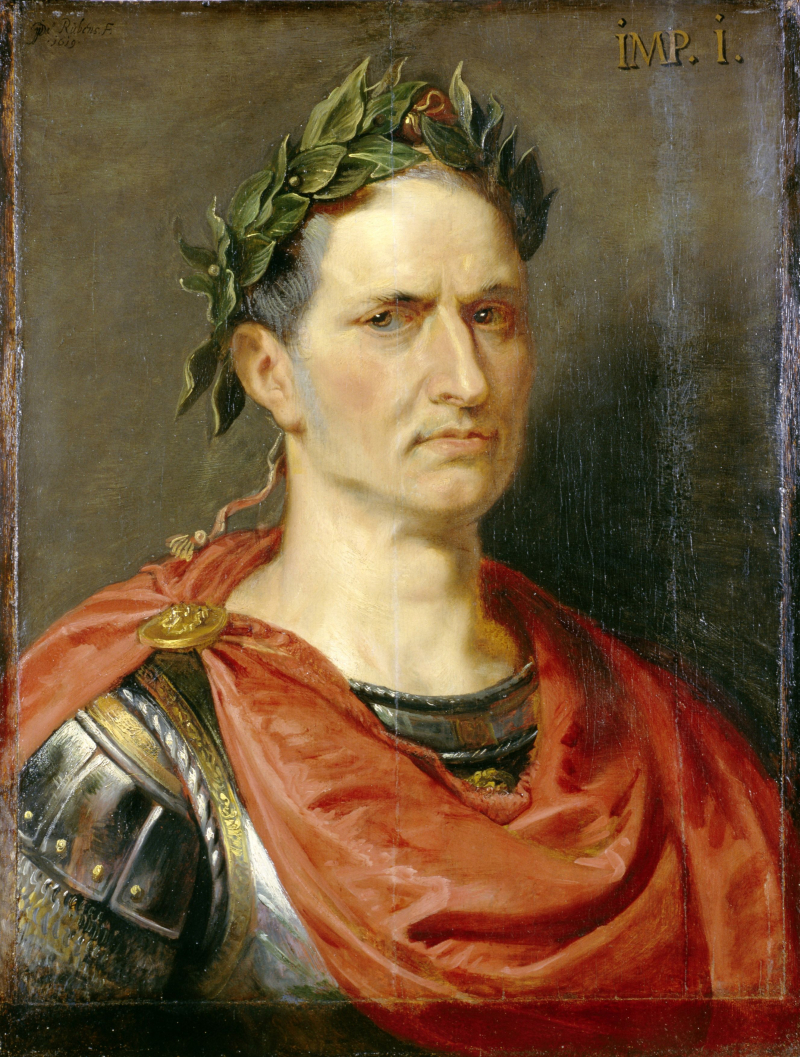
https://www.pinterest.com 
https://deadliestfiction.fandom.com -
We know very little about what life was really like in the old Roman Empire, as with every other ancient empire. However, we do know that everything was white. The idea that everything in ancient Rome was white in hue still appears in many areas, from movies to costume parties to commercials.
Like every other empire from that time, life in Rome wasn't all white. Roman cities had a wide variety of ethnic groups living there, representing many distinct civilizations. Along with homes decorated in various wall paints, murals, and other brilliant artwork, a typical Roman market would feature as many hues and colors as a modern market.
The color of the statues discovered from that era is likely where the myth originated. The majority of Roman sculptures and statues were either buried or left outside after the Roman empire fell. As a result, by the time they were rediscovered and imitated by artists during the Renaissance era, nearly all of them had turned white.

https://www.pinterest.com/ 
https://www.pinterest.co.uk/ -
Your mental image of the Viking Age probably includes many, if not all, of them wearing cartoonish helmets with horns. Some films and television programs take it a step further and swap the horns for wings. The horns don't seem to have any apparent real-world function, so we can only conclude that it must have looked hip to the era's fashion tastes.
However, no such helmet has ever been discovered, thus we have no archaeological evidence that even implies they may have used them. Vikings didn't truly wear metallic helmets, horned or not, but rather leather skull caps, according to all the trustworthy historical accounts from the time. Horned helmets do appear in some of that period's legendary art, although they are only depicted on Gods and other godlike figures, such as ancient warriors.

https://bavipower.com/ 
https://quizzclub.com/ -
Restaurants around the world serve fortune cookies, which are tasty hollow cookies with an encouraging word or "fortune" hidden within. However, they are particularly well-liked in the USA. Many people assume that they are Chinese in origin because they are frequently offered as dessert at the conclusion of meals or along with the bill in Chinese restaurants.
However, if you visited China, you would discover that fortune cookies have nothing to do with the country. In terms of history, Japan is where they originally originated. In reality, you can still buy a lot of other sweets in Japan that are very similar to fortune cookies.
When they were readily available at Japanese bakeries at the turn of the 20th century, they likely arrived in the US with Japanese immigrants. That persisted up until the Second World War, when Japanese-Americans were ordered to be detained and relocated as a result of the attacks on Pearl Harbor.
As a result, the Chinese had the opportunity to start a company that produced and sold them. They quickly gained popularity as a dessert item at Chinese-owned restaurants since they served as a refreshing, savory after-meal treat. Chinese manufacturers continue to dominate the fortune cookie industry a little more than 70 years later.
https://www.forbes.com 
https://alquity.com/ -
The several causes of the French Revolution have been the subject of entire books, but one of them is still regarded as the catalyst for the uprising. According to legend, Marie Antoinette, the queen of France at the time of the revolution, famously reacted when one of her aides informed her that her peasants were starving owing to famine and severe poverty by saying, "Let them eat cake." The adage became so well-known that it is still used to illustrate how indifferent the French monarchy was to its subjects soon before the revolution.
But did Marie Antoinette really say that? There is no proof that she ever said anything like "let them eat cake," despite the fact that she did many things that fully justified the revolt. The expression, which is typically used to describe leaders who are unaware of their subjects' predicament, has really been in some form for a lot longer than that.
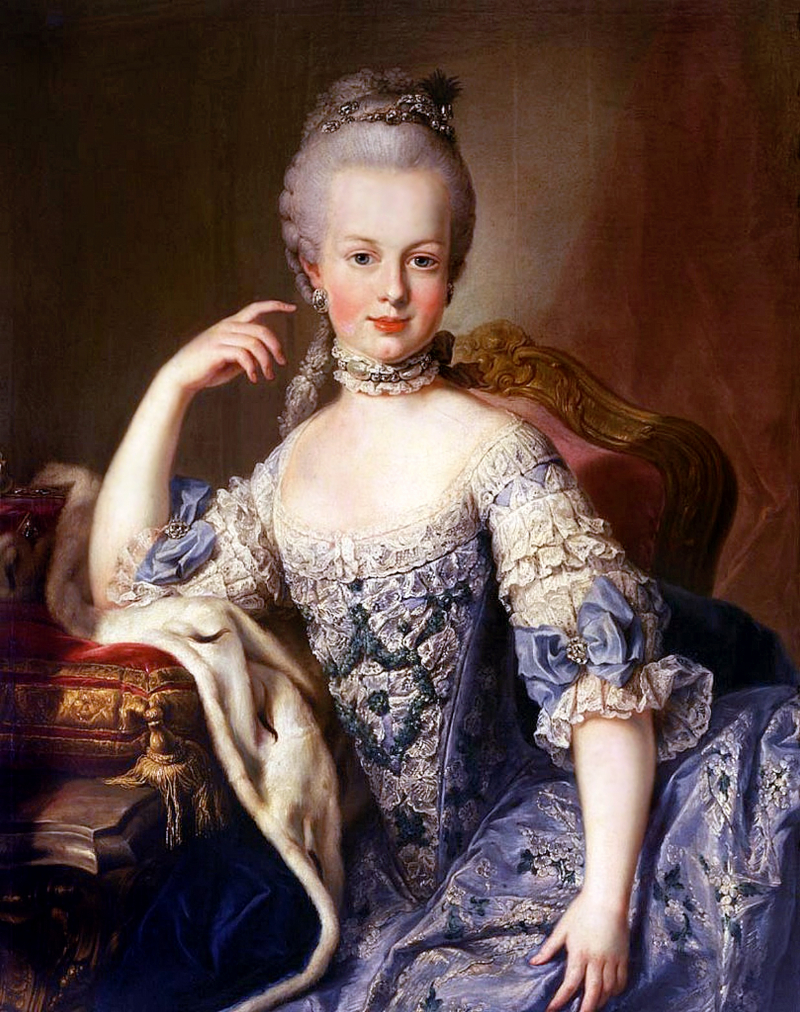
https://www.historyanswers.co.uk/ 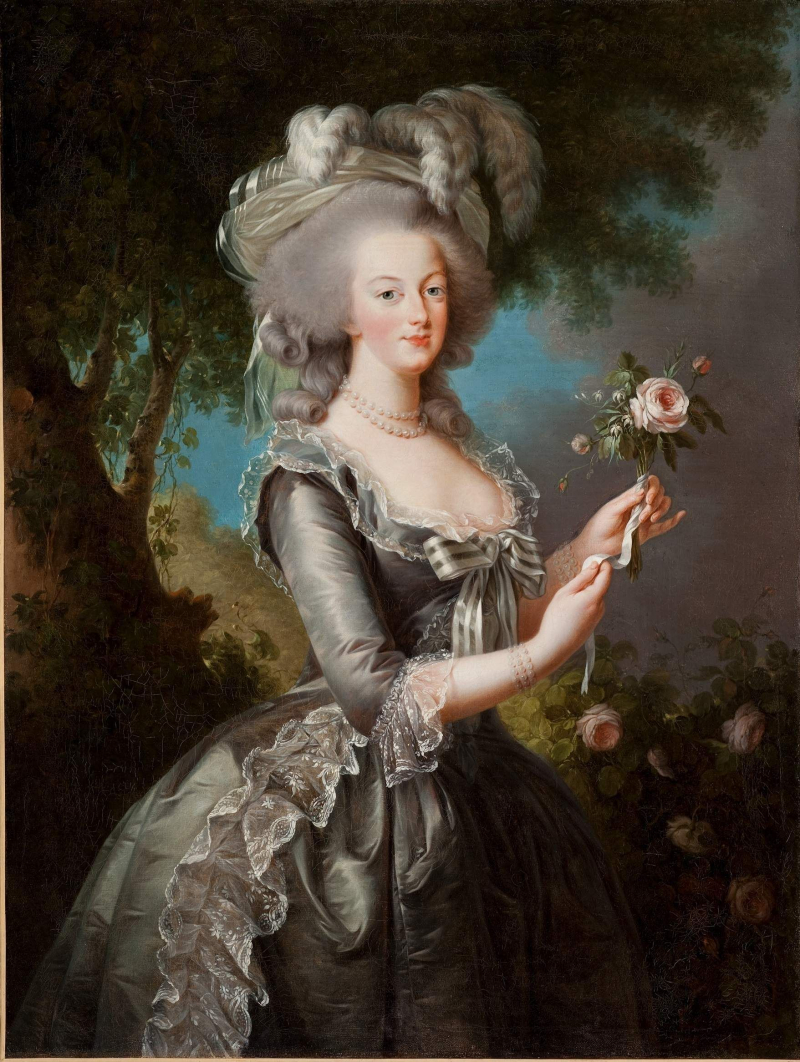
https://www.pinterest.com/

























